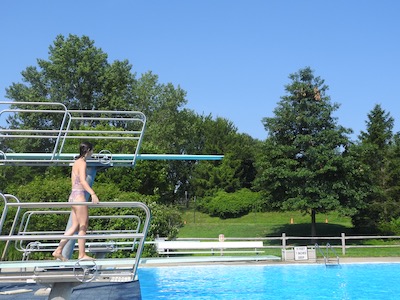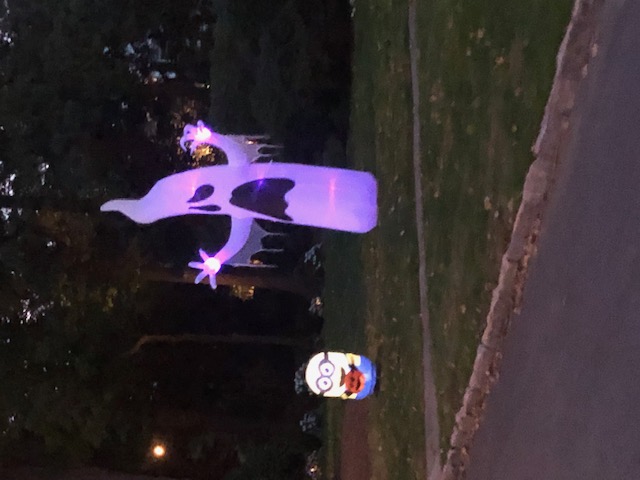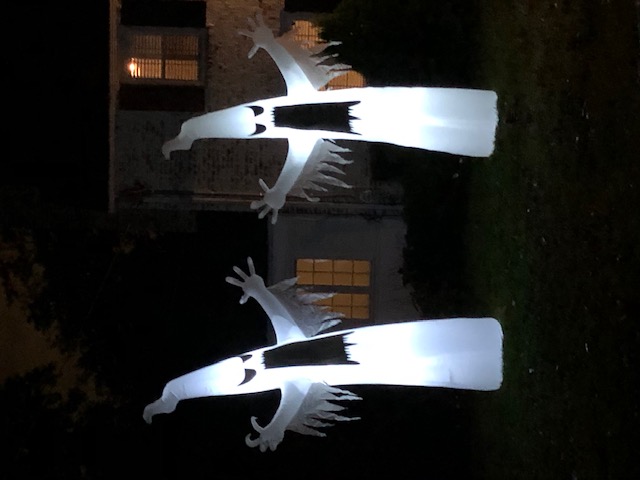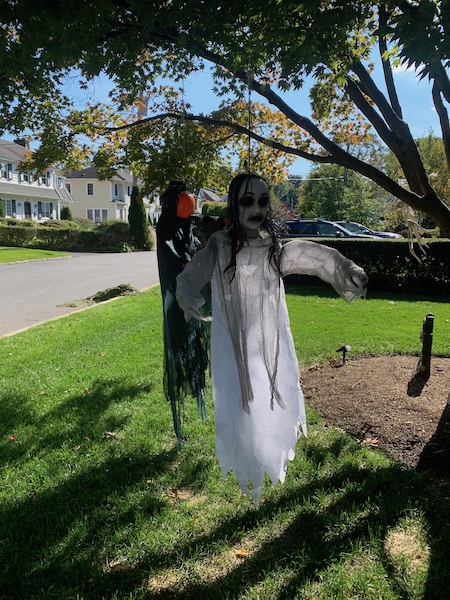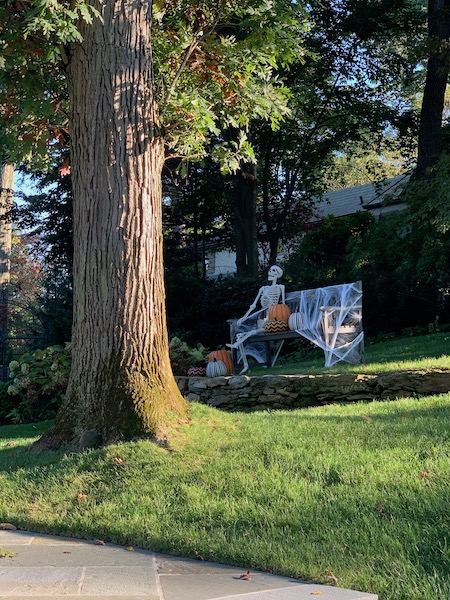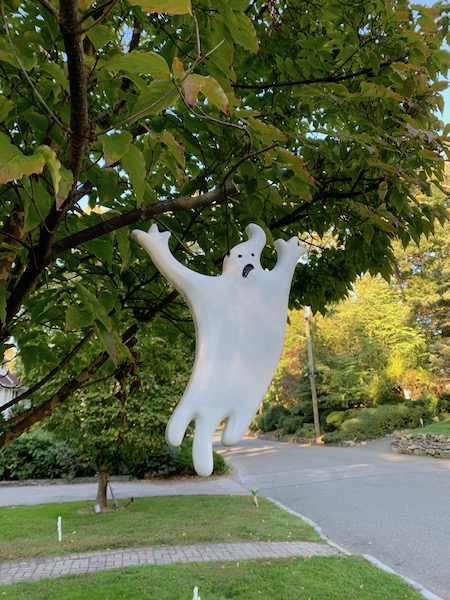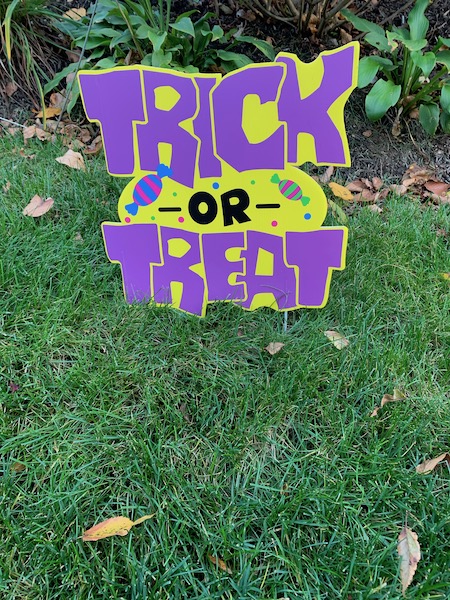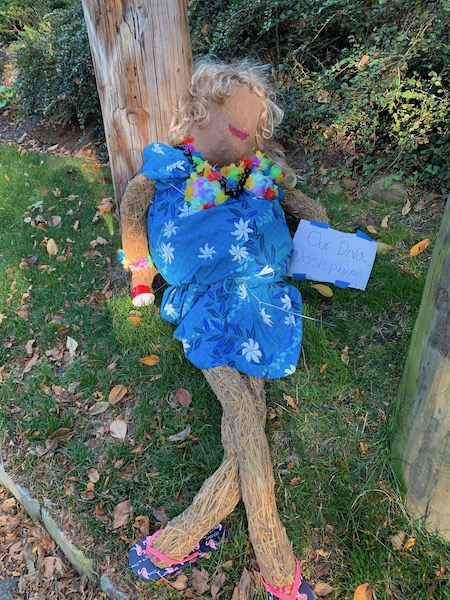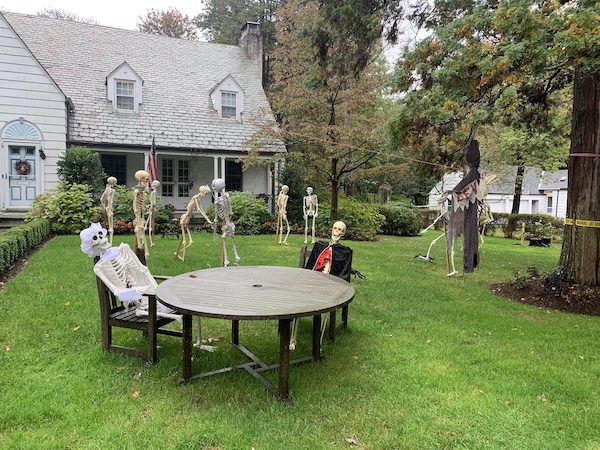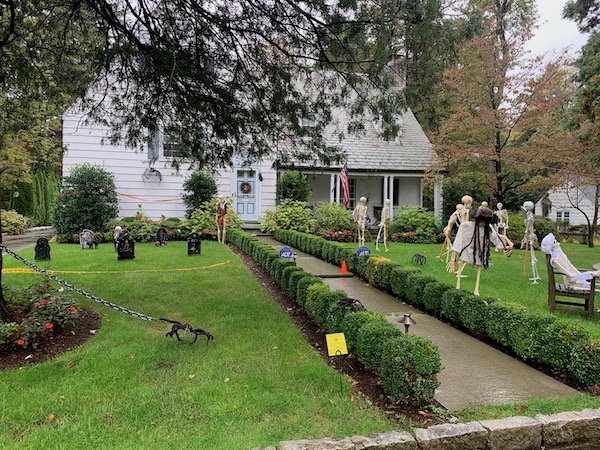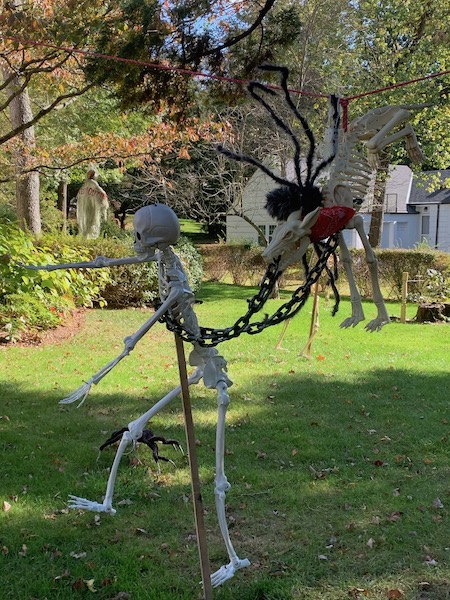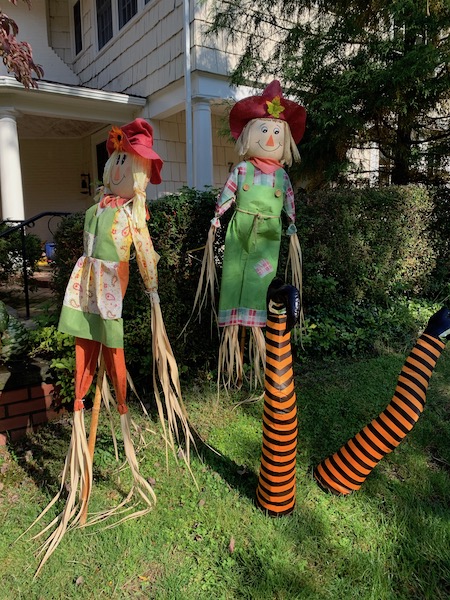Halloween Costume Winners: Check These Out!
- Details
- Written by Joanne Wallenstein
- Hits: 2113
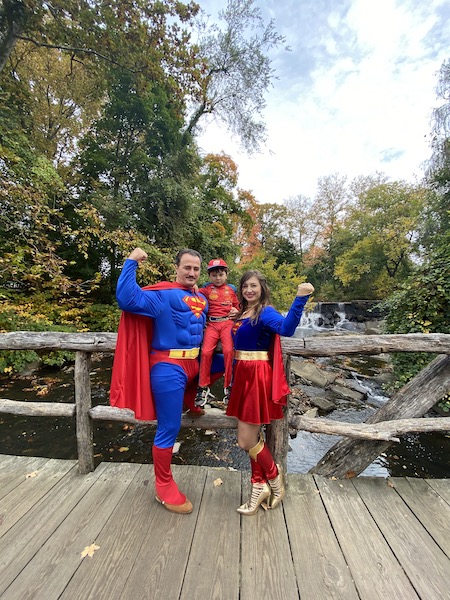 Grand Prize: Lamonarca “Super Family”This year the Scarsdale Recreation Department was unable to host their traditional Halloween parade, but like everyone else, they adapted and sponsored an online Halloween Costume Contest. According to Recreation Supervisor Dan Walczewski, the Village received over 50 entries and from those selected prize winners for the spookiest, cutest, most creative costumes and more. The Grand Prize went to the Lamonarca family posing as a “Superfamily.” Take a look below at all the imaginative entrants.
Grand Prize: Lamonarca “Super Family”This year the Scarsdale Recreation Department was unable to host their traditional Halloween parade, but like everyone else, they adapted and sponsored an online Halloween Costume Contest. According to Recreation Supervisor Dan Walczewski, the Village received over 50 entries and from those selected prize winners for the spookiest, cutest, most creative costumes and more. The Grand Prize went to the Lamonarca family posing as a “Superfamily.” Take a look below at all the imaginative entrants.
Grand Prize: Lamonarca “Super Family”
Spookiest Costume: Aidan Roche as a Ninja
Best Pet Costume: Orca Fusco as Chucky
Most Comical Costume: Benji Miller as Dwight Schrute
Best Makeup: Christy Eguiluz and Martha Passaretta as Dia De Lost Muertos
Best Homemade Costume: Nino DeMartino as Taco Dog
Best Setting: Raphaela Berckemeyer as Ursula the Sea Witch
Best Family Costume: The Wald Family as Star Wars
Cutest Costume: Christopher Bongiorno Horne as Little Leopard
Most Relevant: Serena Lin as Purell
Most Creative: Gabrielle and Emma Daniel as Jellyfish and Scuba Diver
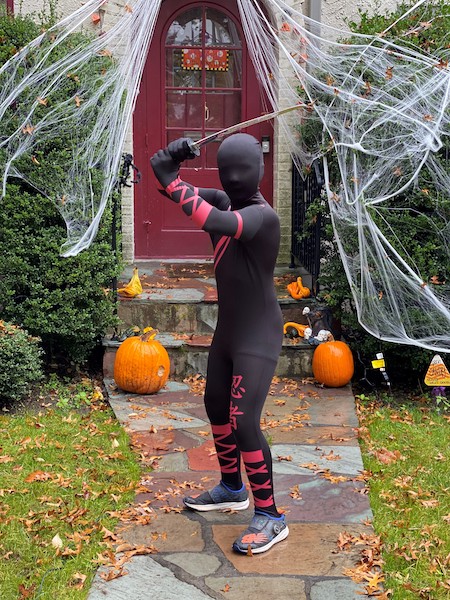 Spookiest Costume: Aidan Roche as a Ninja
Spookiest Costume: Aidan Roche as a Ninja
 Best Pet Costume: Orca Fusco as Chucky
Best Pet Costume: Orca Fusco as Chucky
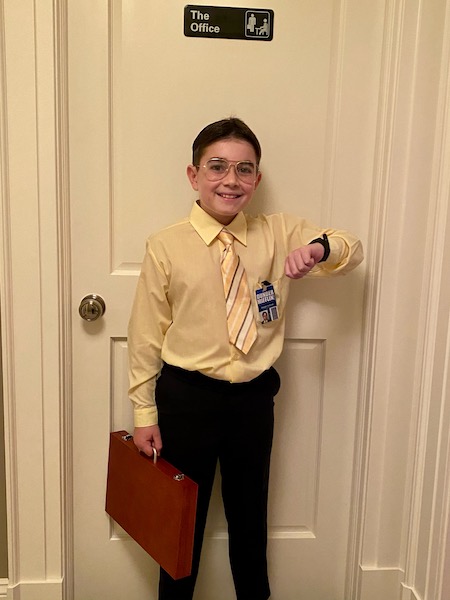 Most Comical Costume: Benji Miller as Dwight Schrute
Most Comical Costume: Benji Miller as Dwight Schrute
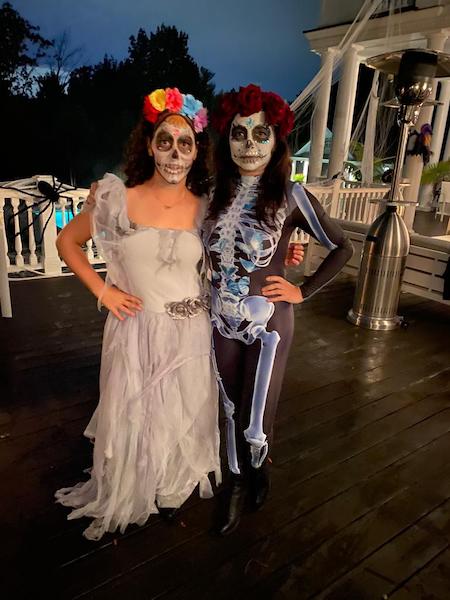 Best Makeup: Christy Eguiluz and Martha Passaretta as Dia De Lost Muertos
Best Makeup: Christy Eguiluz and Martha Passaretta as Dia De Lost Muertos
 Best Homemade Costume: Nino DeMartino as Taco Dog
Best Homemade Costume: Nino DeMartino as Taco Dog
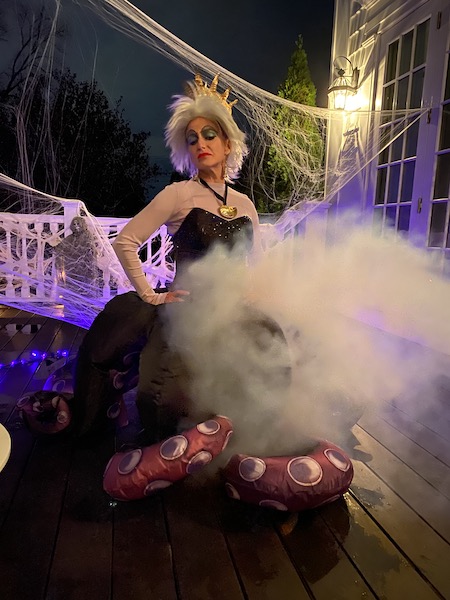 Best Setting: Raphaela Berckemeyer as Ursula the Sea Witch
Best Setting: Raphaela Berckemeyer as Ursula the Sea Witch
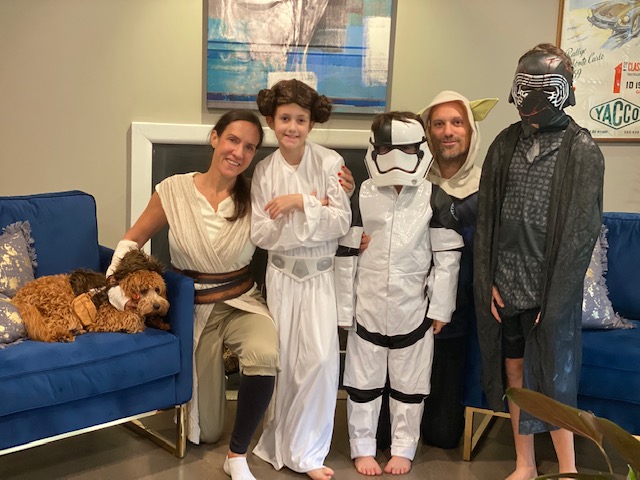 Best Family Costume: The Wald Family as Star Wars
Best Family Costume: The Wald Family as Star Wars
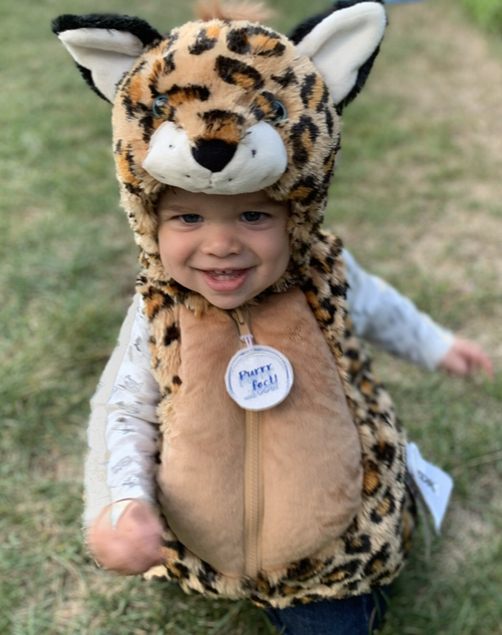 Cutest Costume: Christopher Bongiorno Horne as Little Leopard
Cutest Costume: Christopher Bongiorno Horne as Little Leopard
 Most Relevant: Serena Lin as Purell
Most Relevant: Serena Lin as Purell
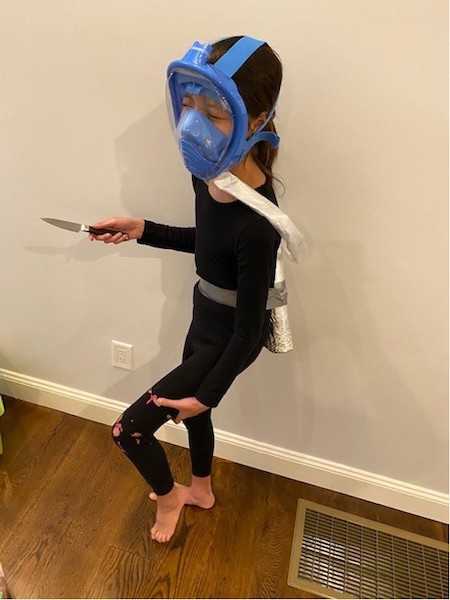
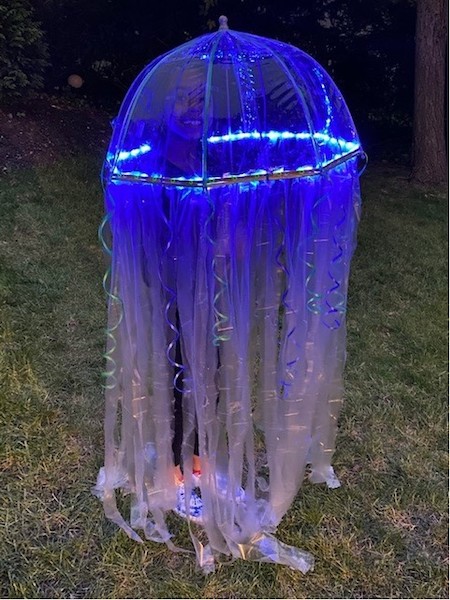 Most Creative: Gabrielle and Emma Daniel as Jellyfish and Scuba Diver
Most Creative: Gabrielle and Emma Daniel as Jellyfish and Scuba Diver
Halloween Photo Gallery
- Details
- Written by Joanne Wallenstein
- Hits: 3062
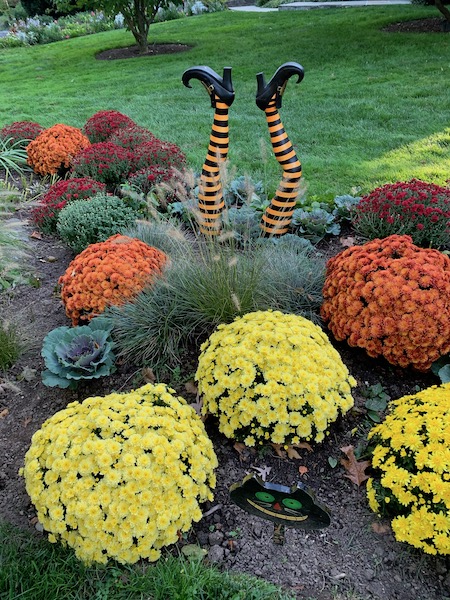 Trick or treating may be considered high risk this year, but Halloween decorations are still permitted, and locals have done a nice job embellishing their front lawns. We travelled around Greenacres and Fox Meadow and took these photos of Halloween decorations – spooky, scary and fun.
Trick or treating may be considered high risk this year, but Halloween decorations are still permitted, and locals have done a nice job embellishing their front lawns. We travelled around Greenacres and Fox Meadow and took these photos of Halloween decorations – spooky, scary and fun.
Please take photos of the decorations in your neighborhood and send them to us to add to the gallery. Email your photos to scarsdalecomments@gmail.com.
Boo!
Letters to the Editor: Everyone Wants Their Children in School... Is It Worth the Risk?
- Details
- Written by Joanne Wallenstein
- Hits: 2996
 This letter was sent to us from Jenna Horowitz, SHS alumni and mental health professional:
This letter was sent to us from Jenna Horowitz, SHS alumni and mental health professional:
I write my thoughts here about Scarsdale reopening plans as a SHS Alum ’06, previous mental health employee at SMS, and someone who is currently employed by a school that will be re-opening full-time. As a mental health professional in an NYC private school, I have spent the last month hearing various school reopening plans in both NYC and Westchester. Based on the fact that each district has very different plans it is clear that we are all making educated guesses about the best protocols without any certainty of what will keep the most people safe. In reading Scarsdale10583.com’s reporting on the re-opening plans, I notice the complexities and tension that are arising that is so clearly defined by parents, teachers, and administrator’s anxiety around the uncertainties of the pandemic.
FACT: Everyone wants kids back in school every year. Scarsdale parents value their children learning and growing, teachers value guiding students and forming connections and students want to gain knowledge and spend time with their peers. However, this year everyone’s health and safety overrides academic growth in the pandemic.
I recently attended a webinar that focused on protecting student mental health in re-opening plans. Dr. Lisa Damour, a well-regarded clinical psychologist, and Liz Katz, constantly re-iterated that this school year is not about being productive or academic excellence. The goal of the 2020-2021 school year is to get kids psychologically through the school year in the global pandemic. Parents who want their children in school learning are focused on the social connections school allows and the belief that in-person learning is more productive. However, wearing a mask and being six feet apart will not allow students to informally hang out, work collaboratively or be focused on the lesson. Students will likely be adjusting their masks constantly, be concerned every time someone coughs or sneezes and have difficulty hearing their teacher due to not seeing their mouths. Then top that off with the reality that someone is likely to contract COVID-19 and spread this and worry about friends, family, or teachers who get very ill or die from this. Is academic excellence really more important than people’s health or emotional well-being?
We can all agree that online learning in the Spring was a disaster for every school. This was a crisis situation that led teachers to realize that their in-person curriculum could not be easily translated to an online platform and led students to be confused and frustrated. I believe that online learning can be different in the Fall. We are more mentally prepared to both teach and learn online. Also, I suspect teachers have probably done some level of research to find tools that can assist in their curriculum planning for the online experience.
In conclusion, my opinion is that the infection rate in NY will rise once schools re-open and we may not even be in school for long. In order to re-open schools safely there are a lot of various equipment and cleaning protocols that need to be put in place that are expensive. Are you willing to use a good portion of the school budget so your children can be in school for 2-3 months, when it can be spent on other options that will support the academic excellence you expect from Scarsdale schools in the future?
For those of you who believe students should be in-person more, I am so hopeful that your belief that this will work is right. That would be the best case scenario. But what are the consequences if you are wrong?
I will be going back to school on September 10th in-person. “Welcome. Happy Hunger Games, may the odds be ever in your favor.” -Suzanne Collins
Why The Pandemic Is Making Me A ‘Backseat Mom'
- Details
- Written by Joanne Wallenstein
- Hits: 2088
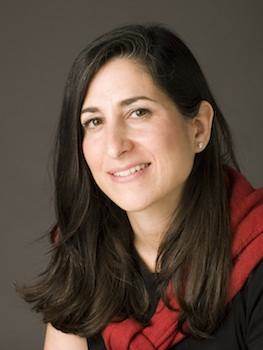 Psychotherapist and Author Stephanie Newman
Psychotherapist and Author Stephanie Newman
As a psychotherapist who has treated many mothers over the years, and as a mother myself, I’m fascinated by the history of maternal identity. How do American moms think about their role in raising their children, protecting them from harm, and helping them become well-adjusted adults? I’m seeing signs that the current pandemic is triggering a change in that identity, away from the “helicopter parenting” of the past 25+ years.
First, some context. In the 19th century, parenting was mostly authoritarian. Children were seen and not heard, doing lots of chores, always putting the family’s needs first. Most women didn’t worry about their kids’ emotional health, just their physical survival in a time of rampant child mortality.
The first half of the 20th century brought the Freudian revolution. Freud’s psychoanalytic concepts about adult disturbances and intrapsychic conflict didn’t offer a blueprint for parenting, but they got mothers worrying that they might give their children “a complex” if they did something wrong.
Benjamin Spock’s 1946 bestseller, The Common Sense Book of Baby and Child Care, launched an era of more active child-rearing – repudiating rigid toileting practices and feeding schedules in favor of positive experiences that allowed each individual child to lead the way. Over the next few decades, middle class American moms began responding to their children’s cues and parenting in more flexible ways.
By the early 1990s, the rising trend was “helicopter parenting” – a stronger focus on ensuring good grades and college admissions. Mothers worried more than ever about minimizing all kinds of risks, big and small – from drug abuse and teen pregnancies to skinned knees at the playground and heartbreaks at the 8th grade dance.
But in 2020, powerless against the pandemic’s devastating toll, I see mothers losing faith in their ability to shield their kids from any sort of harm – physical, emotional, academic, or social. Many are worrying about hanging onto their own jobs or trying to stay productive while working from home. Some are also feeling stressed out about their food supplies or their own elderly parents. And though it was always difficult to work while raising kids, the new challenges of homeschooling and isolation-induced anxiety have raised the bar dramatically. My patients are reeling from the sudden shift: instead of feeling like they can (and should) fix any problem for their kids, many are feeling like they can’t fix anything.
“COVID makes me feel powerless as a parent,” Colleen* said when her daughter, Emily, a college junior, opted to remain halfway across the country, close to campus and her research lab. When Emily began feeling stressed and experiencing chest pains, her mother begged her to see a doctor. But she became angry, saying she was busy and it was hard to get a telemedicine appointment. The more her mother pushed, the more Emily resisted. While her symptoms eventually remitted, stay at home orders made Emily feel isolated, and she began lashing out.
In our sessions, Colleen agonized over whether to helicopter in to relieve her daughter’s misery. She lamented that Emily rejected offers to visit and shot down suggestions about finding ways to socialize. It all came to a head during one especially heated FaceTime exchange, when Colleen pleaded, “You can’t be alone all the time. At least meet friends in a parking lot. Stand six feet apart.” Emily threw her hands up and yelled, “Please stop! You can’t help! You can’t fix this!” When they hung up, Colleen retreated to her bedroom and cried over her helplessness. “It was as if mothering as I’d known it was gone forever.”
These sorts of questions about how involved to get rang true in my own home, where my teens had also been struggling since the onset of the pandemic. I had always prided myself on being helpful – listening, understanding, guiding, and stepping in when necessary. I’d tried not to hover, but had been active and present, seeking tutors or fighting for medical specialists. I encouraged my kids to fight their own battles, to get back up when they stumbled. Whenever they faced something they couldn’t handle and asked for my help, I was there.
But recently, amid closures and cancellations, it has become harder to help my teens cope. My suggestions and empathy often aren’t well received. I can’t protect my kids from a potentially lethal virus, or even fix their disappointments or repair losses they’d suffered. That strikes at the core of my identity as a nurturing and protective mother.
I’ve been worrying lately about the re-opening now underway: Will the virus come steamrolling back, forcing a second round of school and workplace closures? Can our already fragile economy handle this additional stress? How many more lives will be lost to the pandemic? The only certainty right now is uncertainty, which takes its toll on people of all ages.
While my high school-aged son has adapted, taking on household challenges like figuring out to snake a backed-up sink and reboot the WiFi, my daughter has had to deal with mounting losses, including an early return from college and the loss of a coveted summer internship. Despite repeated suggestions of walks, TV time, cooking, and reading material, my every outreach brings an angry smack-down. After each K-O, like a boxer on the ropes, I head back into the ring. My job as a mother is to show I care: survive the attacks and set limits while being present and loving, and help her integrate painful emotions, without rushing in to resolve the difficulties.
Following a particularly charged weekend, I found myself questioning my approach. Feeling terrified that months of disappointment and isolation had taken a permanent toll, I considered arranging a telehealth consultation or booking online meditation classes for my daughter. Would she ever be okay again? Would I?
After we started venturing out, first only for necessities like groceries and doctors’ visits, then for socially distanced visits, I noticed that tensions appeared to be settling. My daughter found a virtual research position, brought home stellar grades, and practiced social distancing without being reminded. When a new challenge arose – her school cancelled all in person classes and on campus engagements – she cried bitterly, and I worried that her already negative outlook could not survive another blow. But within a day she’d contacted friends, taken virtual tours of off-campus apartments, and proposed a plan to use savings to offset rental costs.
It was then I knew that amidst the deprivations, losses, and challenges of the past few months, I’d been given a gift: a unique opportunity to get to know my children in ways that might have eluded me had daily life been as frantic as usual. Seeing my teens on a daily basis, shepherding them through their fears and bleakest moments, I’ve had the privilege of watching them build resilience and strengthen their inner reserves.
Parenting through sadness, fear, and adversity has shown me that I can’t fix everything for my kids, and that’s okay. After watching them in action over the past few months I know that they are equipped to handle whatever comes their way, and I no longer feel a pull to repair every single thing that goes wrong.
Hearing echoes of this same theme from patients, neighbors, and friends, I think we’re starting to see a new version of maternal identity, winding down the era of the overly obsessed helicopter parent. After living through so much loss and disappointment, I can’t imagine seeing moms stressing out nearly as much about excessive screen time, a B on a report card, or too many snacks between meals. Involved mothering won’t go away, of course. We’ll still have huge investments in the health and happiness of our children, and we’re not going to ignore them when they need help. But I think we’ll bring a more balanced perspective to the post-pandemic world. Call us backseat moms.
Stephanie Newman PhD, a psychologist and Edgemont resident, is the author of Barbarians at the PTA. This post appeared on scarymommy.com and Psychology Today.
Scarsdale Municipal Pool Opens its Doors for a Summer of Safely Enforced Fun
- Details
- Hits: 3031
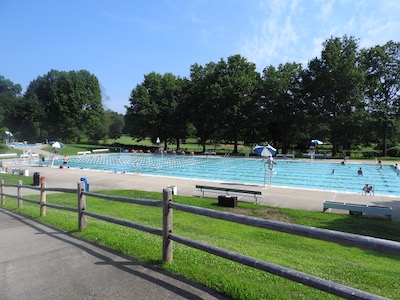
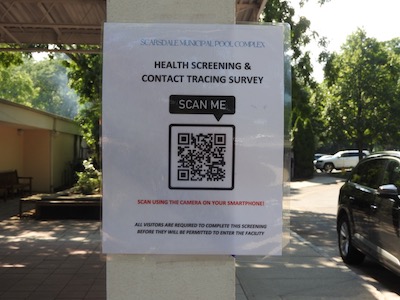
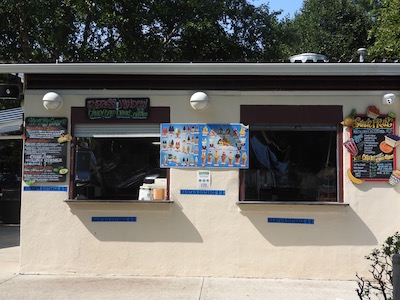
The pool continues to offer private Swim and Dive Lessons. Instructors either wear a plastic face shield in the water, or conduct the lessons from the poolside, whichever the parents and children prefer.
Attendance at the pool has been moderate, but never enough to threaten the ability to safely social distance. The current max capacity is 1,300, but the complex has yet to exceed 500 people thus far. In past summers, the Scarsdale Rec Camp has sent hundreds of kids to the pool each day to swim. Without camp in session, it’s no surprise that attendance is lower than usual. With the July heat currently at full force, attendance has surely increased. The pool staff has done a phenomenal job keeping track of all attendees in order to ensure social distancing is possible and present. To help pool members stay informed on the complex’s capacity, the staff uses Scarsdale Village’s email/text alert system to send out notifications if the pool reaches 50%, 75%, and/or 100% capacity.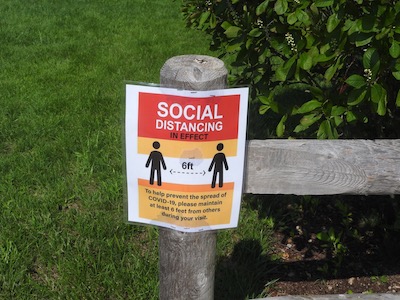
Despite these challenges, this uncertain time period has also allowed for some silver linings. Dan commends his pool staff, the Recreation Department, the Village Manager’s office, and the Board of Trustees and Mayor for the teamwork they have continuously exerted throughout this process. Without the collaboration across these groups, the pool would not have been able to open and function with the necessary rules and regulations.
